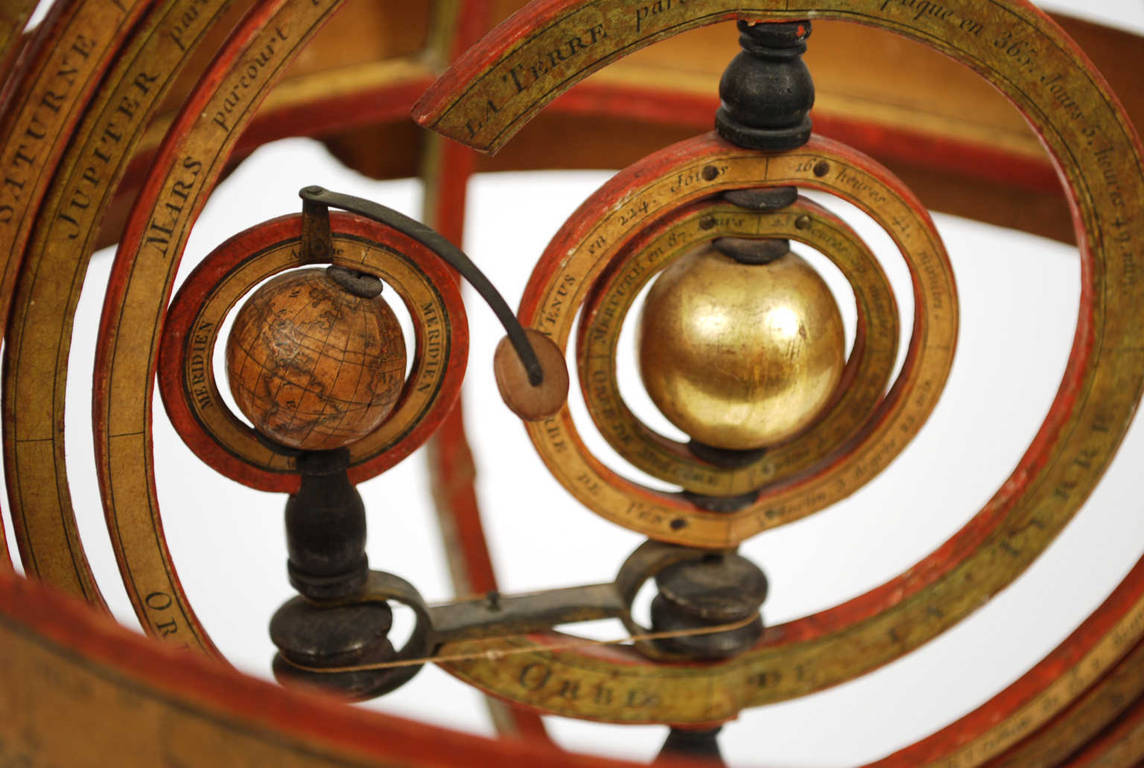1764085271Code 8334 Terrestrial GlobeTerrestrial globe with black seas and oceans, from Cram's Universal Terrestrial Globe, 12-inch, produced by the George F. Cram Company of Indianapolis, one of the most influential American cartographic companies active between the second half of the 19th century and the mid-20th century. The company, founded by George Franklin Cram, specialized in the production of atlases, maps, and school globes, using innovative printing techniques that made globes accessible to a wider audience.
Chromed metal base with clean geometric shapes and a metallic meridian: a clear example of Art Deco design, typical of the years between 1935 and 1941.
Good condition, signs of use and abrasions, good legibility.
Dimensions: 30 x 42 cm – 11.8 x 16.5 in
This globe belongs to one of the company's most recognizable series, characterized by black oceans and colorful continents, a graphic design very typical of the 1930s and 1940s. The cartography is printed on lithographed gore glued onto a molded cardboard sphere and then lacquered; this technique, common at the time, is responsible for the typical surface abrasions found on today's models.
The globe also features a large figure-eight analemma, positioned in the Pacific, showing the solar declination and the equation of time throughout the year: a characteristic feature of pre-war educational globes, when astronomy applied to navigation still played a key role in schools.
An analysis of the globe's borders and geography indicates that it reflects the geopolitical landscape immediately preceding World War II: India is still part of the British Empire, Africa displays the great European colonial divisions, while East Asia displays the typical pre-1941 structure. These elements, combined with the base style and printing method, allow the globe to be dated with good precision to the period between 1938 and 1941. It is a moment of great historical transformation: the world is on the verge of global conflict, and many borders shown on the globe will change radically in the following decades.
George Franklin Cram (1842–1928) was an American map publisher.
After the Civil War, he founded a cartographic company that became the George F. Cram Company in 1867.
His company became famous for producing affordable atlases, globes, and maps, thanks in part to a technique called cerography, which allowed engravings to be made on wax and then plated onto printing plates, making production more efficient.
The first globes date back to the early 16th century. Born from the impetus of great geographical explorations, they were immediately used for educational purposes in princely courts, monasteries, and colleges. In the 18th century, thanks to the work of Louis XIV's official geographer, both the celestial globe—which represents the concave surface of the sky with its constellations—and the terrestrial globe, which shows the Earth's surface with seas, islands, rivers, and cities, became widespread.
The production techniques involved creating two papier-mâché hemispheres, pressed and shaped on or inside a hemispherical mold, left to dry, and internally reinforced with a wooden board.
The hemispheres were then glued together and covered with a thin layer of plaster, onto which the globe's time zones were applied: areas between two meridians, usually twelve, each covering 30 degrees of longitude. The time zones were made of paper printed by engraving on a copper plate, then colored.
In the 19th century, with the expansion of trade, the greater circulation of information, and the introduction of compulsory education, the desire to explore distant lands grew. The old method of globe construction quickly became inadequate: time zones printed from engraved plates were no longer sufficient, and the only effective solution became lithography, which allowed for the rapid printing and updating of maps destined to become obsolete due to the constant advance of geographical discoveries.






























